7 books about Racial
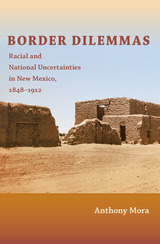
Border Dilemmas
Racial and National Uncertainties in New Mexico, 1848–1912
Anthony Mora
Duke University Press, 2011
The U.S.-Mexican War officially ended in 1848 with the signing of the Treaty of Guadalupe Hidalgo, which called for Mexico to surrender more than one-third of its land. The treaty offered Mexicans living in the conquered territory a choice between staying there or returning to Mexico by moving south of the newly drawn borderline. In this fascinating history, Anthony Mora analyzes contrasting responses to the treaty’s provisions. The town of Las Cruces was built north of the border by Mexicans who decided to take their chances in the United States. La Mesilla was established just south of the border by men and women who did not want to live in a country that had waged war against the Mexican republic; nevertheless, it was incorporated into the United States in 1854, when the border was redrawn once again. Mora traces the trajectory of each town from its founding until New Mexico became a U.S. state in 1912. La Mesilla thrived initially, but then fell into decay and was surpassed by Las Cruces as a pro-U.S. regional discourse developed. Border Dilemmas explains how two towns, less than five miles apart, were deeply divided by conflicting ideas about the relations between race and nation, and how these ideas continue to inform discussion about what it means to “be Mexican” in the United States.
[more]
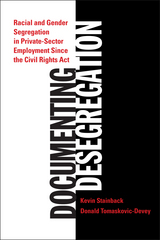
Documenting Desegregation
Racial and Gender Segregation in Private Sector Employment Since the Civil Rights Act
Kevin Stainback
Russell Sage Foundation, 2013
Enacted nearly fifty years ago, the Civil Rights Act codified a new vision for American society by formally ending segregation and banning race and gender discrimination in the workplace. But how much change did the legislation actually produce? As employers responded to the law, did new and more subtle forms of inequality emerge in the workplace? In an insightful analysis that combines history with a rigorous empirical analysis of newly available data, Documenting Desegregation offers the most comprehensive account to date of what has happened to equal opportunity in America—and what needs to be done in order to achieve a truly integrated workforce. Weaving strands of history, cognitive psychology, and demography, Documenting Desgregation provides a compelling exploration of the ways legislation can affect employer behavior and produce change. Authors Kevin Stainback and Donald Tomaskovic-Devey use a remarkable historical record—data from more than six million workplaces collected by the U.S. Equal Employment Opportunity Commission (EEOC) since 1966—to present a sobering portrait of race and gender in the American workplace. Progress has been decidedly uneven: black men, black women, and white women have prospered in firms that rely on educational credentials when hiring, though white women have advanced more quickly. And white men have hardly fallen behind—they now hold more managerial positions than they did in 1964. The authors argue that the Civil Rights Act's equal opportunity clauses have been most effective when accompanied by social movements demanding changes. EEOC data show that African American men made rapid gains in the 1960s at the height of the Civil Rights movement. Similarly, white women gained access to more professional and managerial jobs in the 1970s as regulators and policymakers began to enact and enforce gender discrimination laws. By the 1980s, however, racial desegregation had stalled, reflecting the dimmed status of the Civil Rights agenda. Racial and gender employment segregation remain high today, and, alarmingly, many firms, particularly in high-wage industries, seem to be moving in the wrong direction and have shown signs of resegregating since the 1980s. To counter this worrying trend, the authors propose new methods to increase diversity by changing industry norms, holding human resources managers to account, and exerting renewed government pressure on large corporations to make equal employment opportunity a national priority. At a time of high unemployment and rising inequality, Documenting Desegregation provides an incisive re-examination of America's tortured pursuit of equal employment opportunity. This important new book will be an indispensable guide for those seeking to understand where America stands in fulfilling its promise of a workplace free from discrimination.
[more]
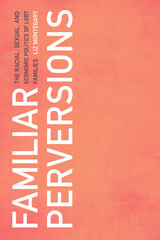
Familiar Perversions
The Racial, Sexual, and Economic Politics of LGBT Families
Montegary, Liz
Rutgers University Press, 2018
Winner of the 2018 Choice Outstanding Academic Title
Over the past two decades, same-sex couples raising children have become more visible within US political and popular culture. Thanks to widely circulated images of well-mannered, well-dressed, and well-off two-parent families, a select number of LGBT-identified parents have gained recognition as model American citizens. In Familiar Perversions, Liz Montegary shows how this seemingly progressive view of same-sex parenting has taken shape during a period of growing racial inequality and economic insecurity in the United States. This book evaluates the recent successes of the “family equality” movement, while asking important questions about its relationship to neoliberalism, the policing of sexual cultures, and the broader context of social justice organizing at the turn of the twenty-first century.
Montegary’s investigation of the politics of LGBT family life takes us on a journey that includes not only activist events and the courtrooms where landmark decisions about same-sex families were made, but also parenting workshops, cruise ships, and gay resort towns. Through its sustained historical analysis, Familiar Perversions lays critical groundwork for imagining a queer family movement that can support and strengthen the diverse networks of care, kinship, and intimacy on which our collective survival depends.
Over the past two decades, same-sex couples raising children have become more visible within US political and popular culture. Thanks to widely circulated images of well-mannered, well-dressed, and well-off two-parent families, a select number of LGBT-identified parents have gained recognition as model American citizens. In Familiar Perversions, Liz Montegary shows how this seemingly progressive view of same-sex parenting has taken shape during a period of growing racial inequality and economic insecurity in the United States. This book evaluates the recent successes of the “family equality” movement, while asking important questions about its relationship to neoliberalism, the policing of sexual cultures, and the broader context of social justice organizing at the turn of the twenty-first century.
Montegary’s investigation of the politics of LGBT family life takes us on a journey that includes not only activist events and the courtrooms where landmark decisions about same-sex families were made, but also parenting workshops, cruise ships, and gay resort towns. Through its sustained historical analysis, Familiar Perversions lays critical groundwork for imagining a queer family movement that can support and strengthen the diverse networks of care, kinship, and intimacy on which our collective survival depends.
[more]

The Only Way Out
The Racial and Sexual Performance of Escape
Katherine Brewer Ball
Duke University Press, 2024
In The Only Way Out, Katherine Brewer Ball explores the American fascination with the escape story. Brewer Ball argues that escape is a key site for exploring American conceptions of freedom and constraint. Stories of escape are never told just once but become mythic in their episodic iterations, revealing the fantasies and desires of society, the storyteller, and the listener. While white escape narratives have typically been laden with Enlightenment fantasies of redemption where freedom is available to any individual willing to seize it, Brewer Ball explores how Black and queer escape offer forms of radical possibility. Drawing on Black studies, queer theory, and performance studies, she examines a range of works, from nineteenth-century American literature to contemporary queer of color art and writing by contemporary American artists including Wilmer Wilson IV, Tourmaline, Tony Kushner, Junot Díaz, Glenn Ligon, Toshi Reagon, and Sharon Hayes. Throughout, escape emerges as a story not of individuality but of collectivity and entanglement.
[more]
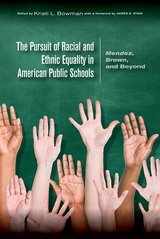
The Pursuit of Racial and Ethnic Equality in American Public Schools
Mendez, Brown, and Beyond
Kristi L. Bowman
Michigan State University Press, 2015
In 1954 the Supreme Court decided Brown v. Board of Education; ten years later, Congress enacted the Civil Rights Act. These monumental changes in American law dramatically expanded educational opportunities for racial and ethnic minority children across the country. They also changed the experiences of white children, who have learned in increasingly diverse classrooms. The authors of this commemorative volume include leading scholars in law, education, and public policy, as well as important historical figures. Taken together, the chapters trace the narrative arc of school desegregation in the United States, beginning in California in the 1940s, continuing through Brown v. Board, the Civil Rights Act, and three important Supreme Court decisions about school desegregation and voluntary integration in 1974, 1995, and 2007. The authors also assess the status of racial and ethnic equality in education today and consider the viability of future legal and policy reform in pursuit of the goals of Brown v. Board. This remarkable collection of voices in conversation with one another lays the groundwork for future discussions about the relationship between law and educational equality, and ultimately for the creation of new public policy. A valuable reference for scholars and students alike, this dynamic text is an important contribution to the literature by an outstanding group of authors.
[more]
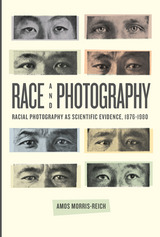
Race and Photography
Racial Photography as Scientific Evidence, 1876-1980
Amos Morris-Reich
University of Chicago Press, 2015
Race and Photography studies the changing function of photography from the 1870s to the 1940s within the field of the “science of race,” what many today consider the paradigm of pseudo-science. Amos Morris-Reich looks at the ways photography enabled not just new forms of documentation but new forms of perception. Foregoing the political lens through which we usually look back at race science, he holds it up instead within the light of the history of science, using it to explore how science is defined; how evidence is produced, used, and interpreted; and how science shapes the imagination and vice versa.
Exploring the development of racial photography wherever it took place, including countries like France and England, Morris-Reich pays special attention to the German and Jewish contexts of scientific racism. Through careful reconstruction of individual cases, conceptual genealogies, and patterns of practice, he compares the intended roles of photography with its actual use in scientific argumentation. He examines the diverse ways it was used to establish racial ideologies—as illustrations of types, statistical data, or as self-evident record of racial signs. Altogether, Morris-Reich visits this troubling history to outline important truths about the roles of visual argumentation, imagination, perception, aesthetics, epistemology, and ideology within scientific study.
Exploring the development of racial photography wherever it took place, including countries like France and England, Morris-Reich pays special attention to the German and Jewish contexts of scientific racism. Through careful reconstruction of individual cases, conceptual genealogies, and patterns of practice, he compares the intended roles of photography with its actual use in scientific argumentation. He examines the diverse ways it was used to establish racial ideologies—as illustrations of types, statistical data, or as self-evident record of racial signs. Altogether, Morris-Reich visits this troubling history to outline important truths about the roles of visual argumentation, imagination, perception, aesthetics, epistemology, and ideology within scientific study.
[more]
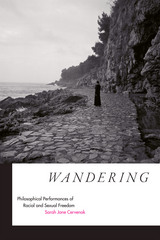
Wandering
Philosophical Performances of Racial and Sexual Freedom
Sarah Jane Cervenak
Duke University Press, 2014
Combining black feminist theory, philosophy, and performance studies, Sarah Jane Cervenak ruminates on the significance of physical and mental roaming for black freedom. She is particularly interested in the power of wandering or daydreaming for those whose mobility has been under severe constraint, from the slave era to the present. Since the Enlightenment, wandering has been considered dangerous and even criminal when associated with people of color. Cervenak engages artist-philosophers who focus on wayward movement and daydreaming, or mental travel, that transcend state-imposed limitations on physical, geographic movement. From Sojourner Truth's spiritual and physical roaming to the rambling protagonist of Gayl Jones's novel Mosquito, Cervenak highlights modes of wandering that subvert Enlightenment-based protocols of rationality, composure, and upstanding comportment. Turning to the artists Pope.L (William Pope.L), Adrian Piper, and Carrie Mae Weems, Cervenak argues that their work produces an otherworldly movement, an errant kinesis that exceeds locomotive constraints, resisting the straightening-out processes of post-Enlightenment, white-supremacist, capitalist, sexist, and heteronormative modernity. Their roaming animates another terrain, one where free, black movement is not necessarily connected to that which can be seen, touched, known, and materially valued.
[more]
READERS
Browse our collection.
PUBLISHERS
See BiblioVault's publisher services.
STUDENT SERVICES
Files for college accessibility offices.
UChicago Accessibility Resources
home | accessibility | search | about | contact us
BiblioVault ® 2001 - 2024
The University of Chicago Press









